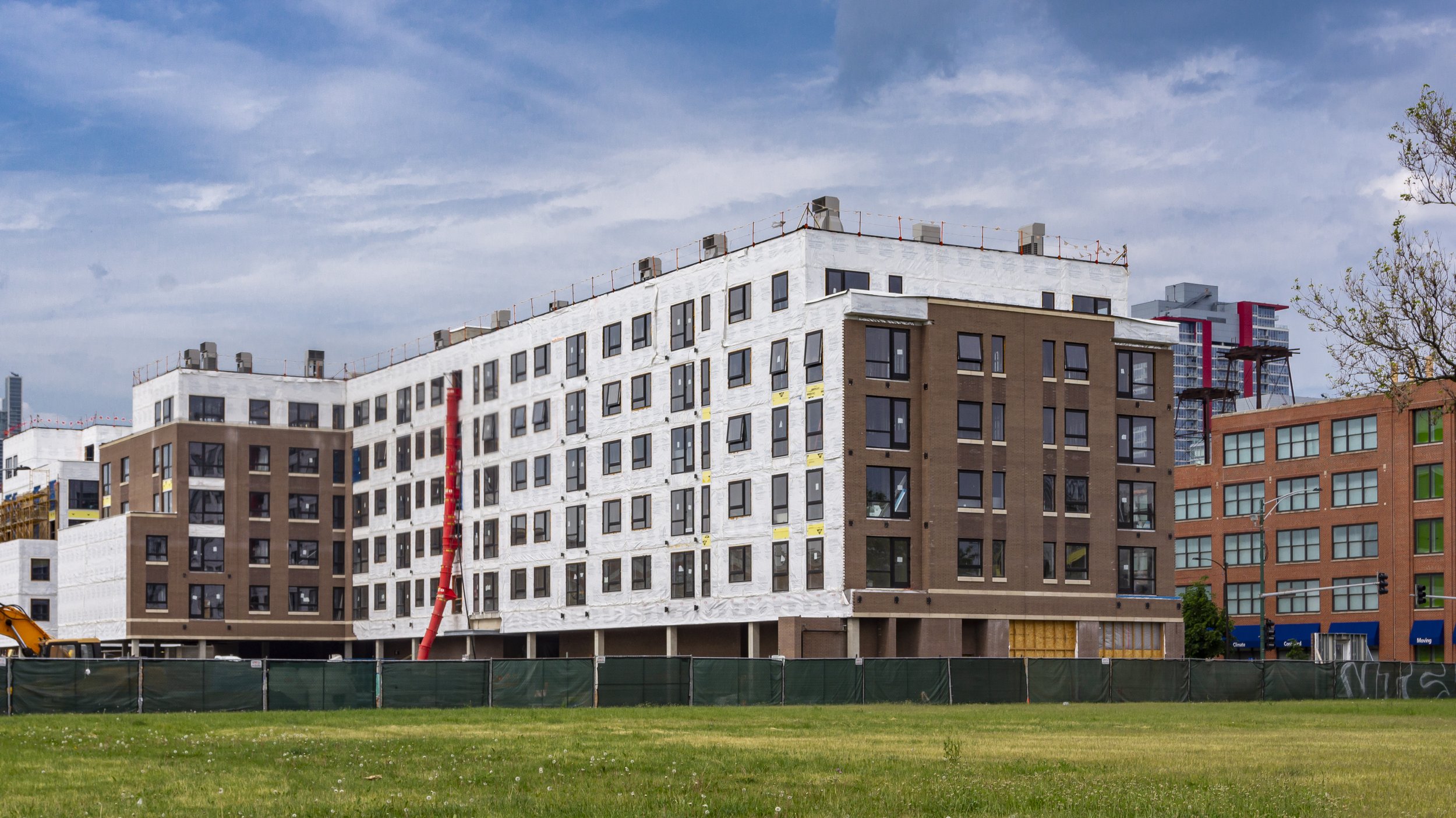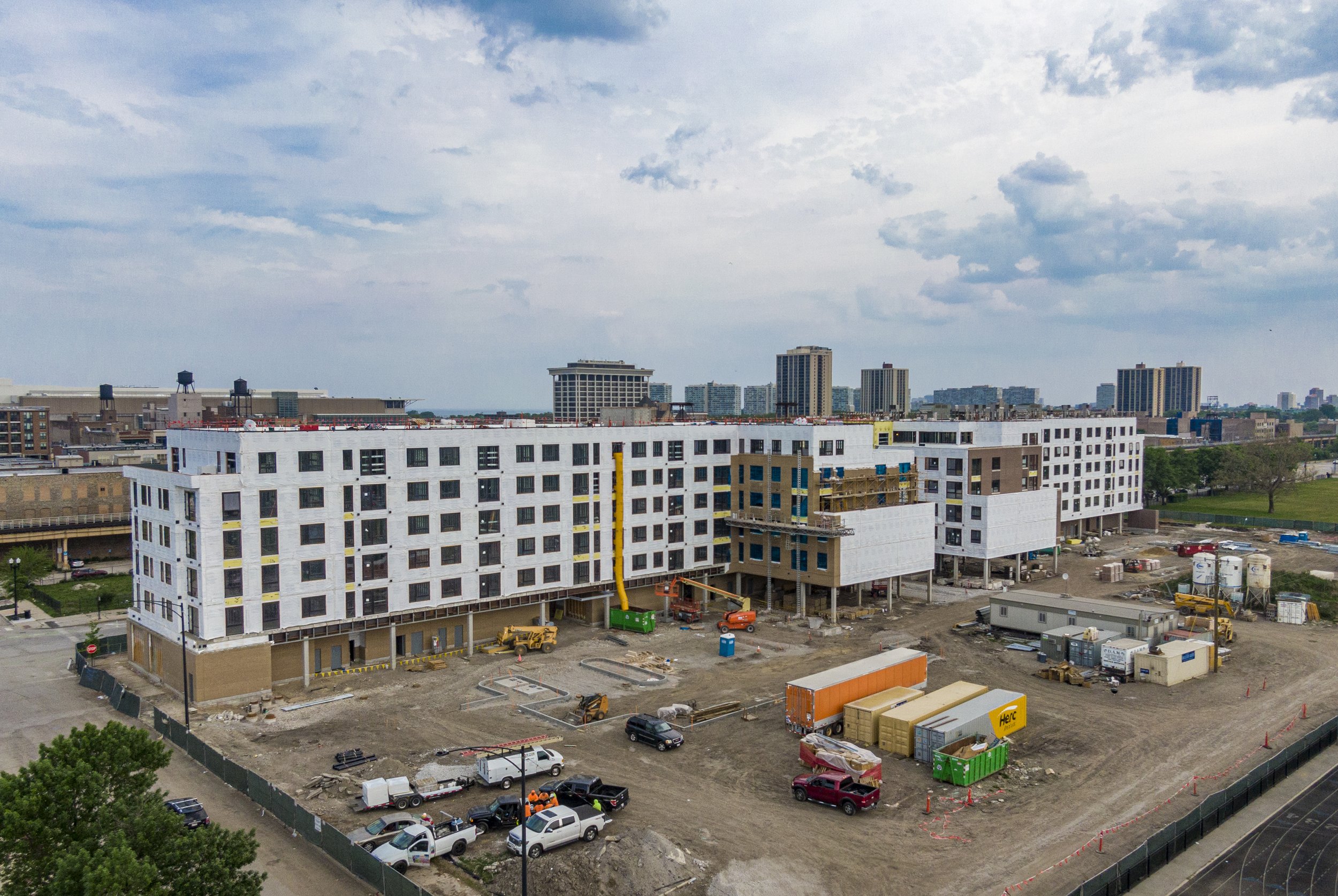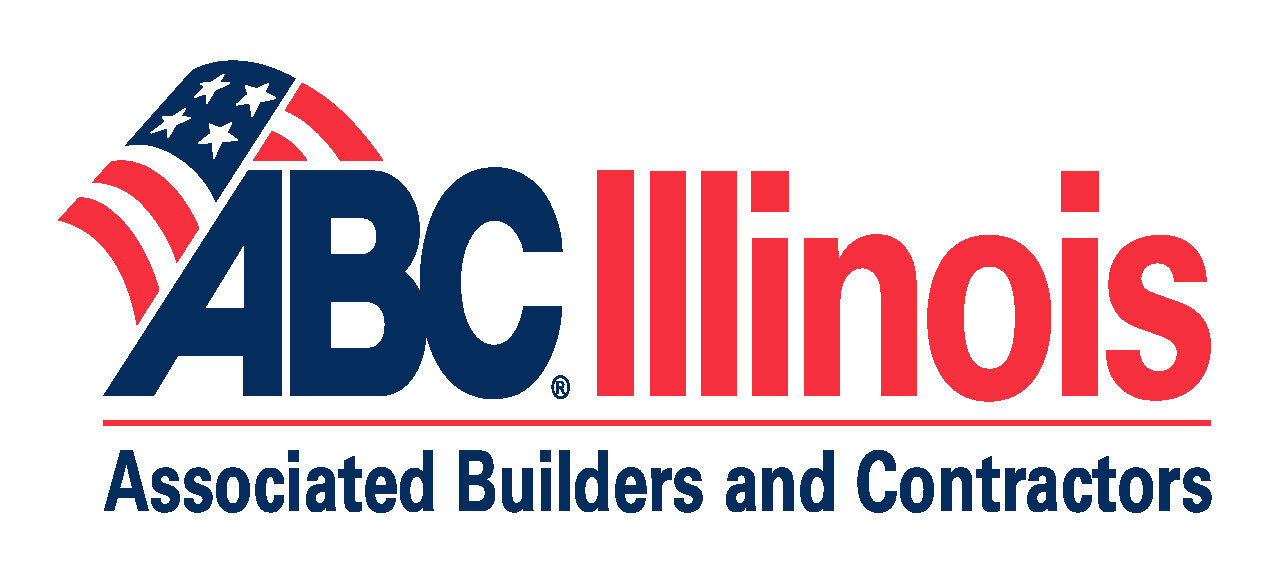23RD Place at Southbridge | Chicago, IL
McShane Construction Company
General Contractor > Residential > Residential










Innovative Programs Relating to Quality Control
Quality in construction begins with complete and fully coordinated design documents. McShane’s Director of Quality Control facilitated this entire process with the 23rd Place at Southbridge project team, including field management staff, by conducting design document reviews to confirm coordination between all design disciplines and to evaluate constructability. McShane and their joint venture partner, Powers & Sons Construction, also attended meetings with the owner and design consultants with the goal of providing valuable insights into constructability and pricing as it related to design decisions.
The McShane Quality Assurance Manual was also an integral component of 23rd Place at Southbridge’s construction. Daily/weekly reports on the various construction site conditions and events were recorded in CMiC. Independent third-party material testing services were conducted on a set schedule in accordance with building codes. Field Observation Reports were prepared for trades to be utilized by field staff and office-based project staff when at the jobsite. Additionally, SALUS, a QA/QC construction software, was used to facilitate QA/QC checklists for the field and project teams to ensure that all work put in place by trades aligned with McShane’s standards for safety and quality procedures. The program is a tool to document quality control as well as a training tool for younger staff to teach them the specific items to monitor for each given trade.
23rd Place at Southbridge is a LEED-certified development, so McShane-Powers worked with Wight & Company to ensure that the buildings met all design and energy requirements to achieve certification.
As the project neared completion, McShane-Powers worked through its closeout procedure by pre-punching the building with subcontractors in advance of walking with the owner and architect to eliminate and minimize the overall list as much as possible.
During closeout, the team oversaw the startup and testing of all mechanical and electrical systems and advised the facility’s operating staff on the proper use and maintenance of all systems. The firm also assembled an Operations & Maintenance Manual that was distributed to the owner upon completion and testing of the new facility. These documents included all as-built drawings for each construction discipline and warranty information for all construction materials and equipment that comprised the building.
Innovative Programs Relating to Scheduling
McShane understands that the schedule is the backbone of the project. Field and project management staff are extensively trained in scheduling and collaborating with subcontractors and clients to drive the critical path. The firm has a long-standing track record of meeting tight project schedules for clients and has never received liquidated damages on a project. Throughout the project, McShane created weekly internal schedules, which Powers & Sons then uploaded to Procore, a construction software used to create a precise timeline. This ensured that all parties involved were aware of the schedule and understood what needed to be accomplished to stay on track.
Value Analysis/Engineering Processes
McShane conducted its Value Engineering analysis during the design phase as part of the pre-construction process. Undertaken concurrently with the building design, each recommendation was identified as a line item with the approximate dollar savings realized by the client. McShane is particularly skilled at assisting the design team in “designing to budget” and presenting well-researched value engineering options for the project. McShane collaborated with both The Community Builders and Nia Architects to identify cost savings areas without compromising the integrity of the buildings and design.
Special Obstacles Overcome
Underground obstructions, including abandoned rail from old tracks, that blocked the permanent power routing and building water connection were discovered during construction. The building did not have running water or permanent electricity at the first phase of finishes due to these conflicts, but McShane-Powers worked with SpaceCo, the project’s civil engineer, the Chicago Water Department, and subcontractors to devise strategies to reroute the water lines and electrical conduit in a cost-effective manner. When a cross-country MCI cable was found running through the jobsite, the team redesigned the site utilities and the way in which the grade was finished on the site. Despite these obstacles, McShane-Powers was able to adapt the schedule to keep the critical path of construction moving.
Difficulties and Extenuating Circumstances Encountered
As with many projects, 23rd Place at Southbridge faced material shortages and delays. However, when the team encountered these challenges, they worked to find alternative solutions that prevented further delays without compromising quality. For example, when they were unable to obtain the appliances originally slated for the project, they switched to different models of equal quality.
Covid, and the restrictions that it brought, impacted the project’s manpower. However, McShane worked quickly and diligently to implement new precautionary parameters. These protocols included six feet social distancing, face coverings, hand washing before entering the construction trailer, isolation of trade crews, temperature checks with contactless thermometers, and virtual or outdoor meetings. This allowed the crews to resume work safely and efficiently.
Innovative Programs Relating to Productivity
McShane has spent the last several years upgrading their technology platforms, thereby increasing efficiency and productivity on their projects. At 23rd Place at Southbridge, the firm implemented CMiC, an integrated platform that links the accounting and project management elements for all projects, allowing the project team, owner, subcontractors, and design team to access documents at any time. McShane also implemented SALUS to automate QA/QC inspection. Additionally, PlanGrid was used during the punch list process. This enabled McShane to assign tasks directly to subcontractors during the finishing stages and made it easy for the owner and architect to access punch lists. Together, these platforms enhanced mobility of office personnel, increased productivity of field personnel, cut down on communication time, and improved clarity.

